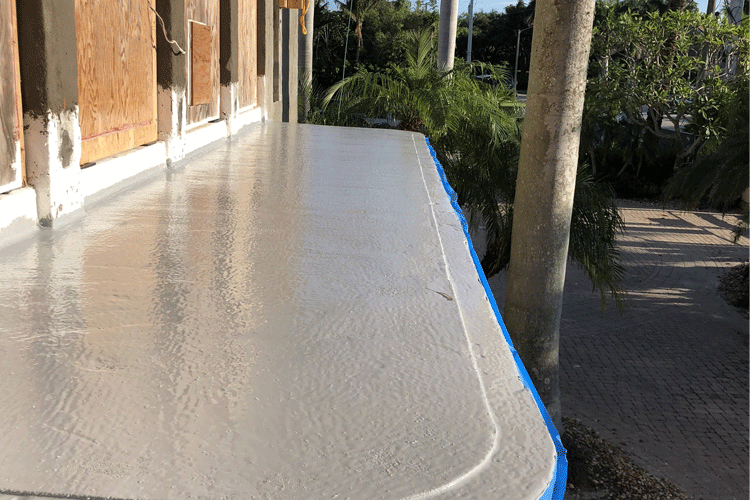
Do you know the major reason balconies fail? Water! Here in sunny Los Angeles, it may seem silly to worry about your balcony being waterproofed, what with our rare rainfall. But even the slightest amount of water, or standing water, can prove deadly to your balcony. How can you protect your investment? By waterproofing your balcony before it’s too late.
How to avoid water damage in balconies in Los Angeles
Balconies endure the same kind of wear and tear as the rest of your house, but unfortunately, wood-framed balconies have a high rate of failure. This is mostly due to leaks and other kinds of water damage. While some structural damage is easy to see, such as cracks, the more insidious damage is the kind you don’t see -- rot caused by water damage. By the time you can see it, it may be too late to fix.
So, how do you avoid this? Start at the beginning while you are building your balcony. Subtle construction techniques can boost the health and life of your balcony.
Constructing a balcony to avoid water damage in Los Angeles
It is well known that water damage is the main reason for balcony failure in Los Angeles. How can you avoid this? When your balcony is being constructed, there are a few things your contractor should be including in the balcony design:
- Sloping: Obviously, you don’t want your deck furniture sliding down the balcony. However, incorporating a small slope to your balcony design (say, about 2%) will allow any water to run off and onto the ground below.
- Step Down: Balconies should not be flush with indoor floors. You should step down to any balcony. This prevents water from infiltrating at door thresholds.
- Cover Your Balcony: Sure, it’s nice to get a little sun while you're sitting on your balcony, but did you know that a covered balcony actually lasts longer than an uncovered one? Any rainfall will impact the durability of a balcony. If you cover your balcony, your balcony will suffer less water damage from the rain.
- Treated Wood: Using chemically treated wood may be more expensive, but it will also ensure the increased durability of your balcony.
- Flashing: Using material that is impervious to water is a must. Called flashing, this material is installed around vulnerable areas, such as doorways and the perimeter of the balcony to ensure water doesn’t penetrate those areas.
- Deck Membrane: Once your plywood balcony is installed, a deck membrane will be installed to create a waterproof surface. This membrane should be inspected before the concrete is installed to ensure proper installation and seal any holes that may still exist.
- T-Bars: Before the concrete topping is applied, t-bars are installed on your balcony to create a space for water to drain out of your balcony and onto the ground.
What are some signs of water damage on your balcony in Los Angeles?
Nobody wants to have to rebuild their balcony, or worse, have it collapse. Here in Los Angeles, you can expect your balcony to last about 20 years or so. However, even if your balcony is newer, you should inspect your balcony annually and make any necessary repairs.
Here are some signs you should look out for:
- Creaking: Is your balcony creaking when you step on to it? That’s a clear sign that something is wrong. Any sound that suddenly appears is a strong indicator that the integrity of the deck is compromised -- a dangerous situation to be in.
- Decay caused by moisture: This is perhaps the most treacherous because it is often invisible to the naked eye. Hiring an expert inspector will help you determine if there is any water damage and, if so, how bad it is.
- Check for cracks: Cracks are usually more of an annoyance than a structural problem. But, with balconies, one can never be too safe. If you notice any big cracks or cracks that have grown, you should consult a structural engineer.
- Check the Railing: Once the railing begins to move or wobble, it is a clear sign that they need to be repaired or replaced.
- Check for Rot: Use a screwdriver to poke around for any soft spots. You can remove thumb-size areas of rot with a chisel, then treat the hole with a wood preservative. This will stop the rot and keep it from spreading. If you have bigger areas of rot, you may need to replace the entire piece of wood or balcony.
- Splintering, loose nails or screws, displacement of the support posts: Any of these signs give fair warning that some part or the entire balcony will need to be replaced.
If any of these factors compromise the supporting structures and allow moisture to build up, the balcony may need to be retrofitted or replaced.
Looking to update, repair, or replace your balcony? Call the experts at Balcony Creations. We have the professional know-how to make sure your balcony is ready for you to enjoy all year round.
